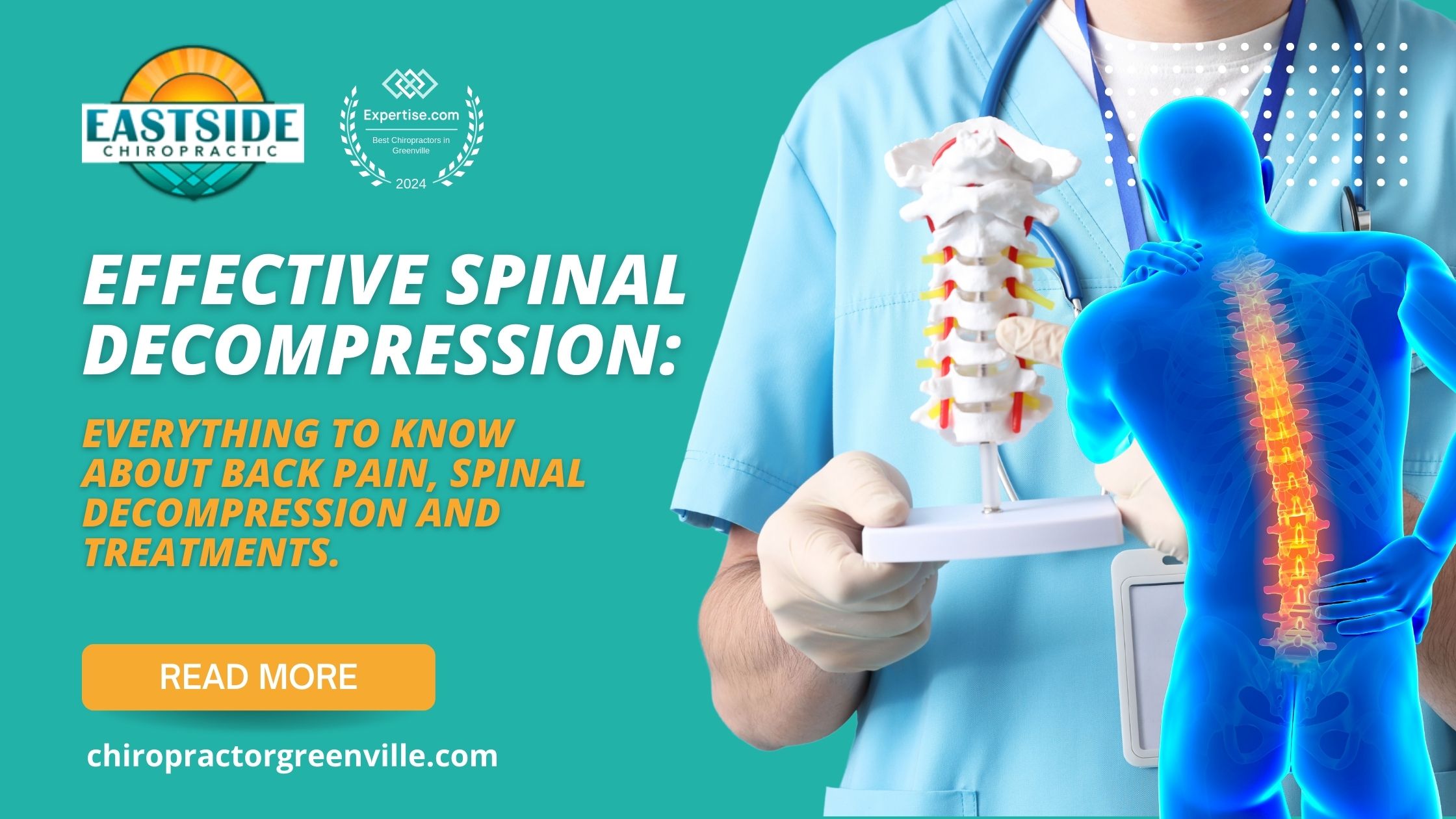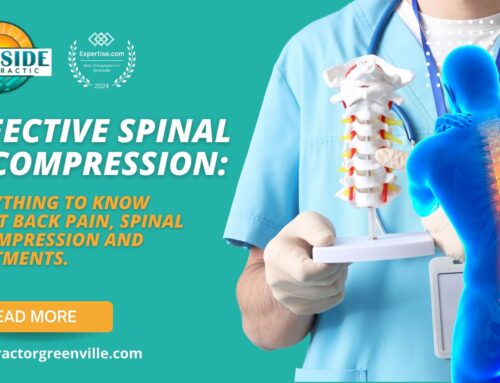Introduction
Ever wake up with a nagging pain in your back that just won’t quit? Or perhaps you’ve tried everything from medications to other treatments, and nothing seems to work? If you’re nodding your head in agreement, then spinal decompression might be just what the doctor—specifically, your chiropractor—ordered.
Understanding Spinal Decompression
So, what exactly is spinal decompression, and why should you care? Spinal decompression is a non-surgical therapy designed to relieve pain and improve mobility by decompressing the spine. In simpler terms, it’s like giving your spine a little TLC to help it heal and function better.
Definition and Purpose
Spinal decompression works by gently stretching the spine, which changes its force and position. This process helps relieve pressure from the spinal disks, which are gel-like cushions between your bones in the spine.
How It Works
The primary goal of spinal decompression is to create a negative pressure within the spinal discs. Think of it like a tiny vacuum pulling everything back into place, encouraging the flow of oxygen, water, and nutrient-rich fluids into the discs so they can heal.
Types of Spinal Decompression
You have two main options when it comes to spinal decompression: surgical and non-surgical. Of course, we’d all prefer the non-surgical route if it’s available, right?
Surgical Decompression
Surgical decompression involves invasive procedures like laminectomy or discectomy. While effective, these options are generally considered last-resort treatments due to their risk factors and longer recovery periods.
Non-Surgical Decompression
Non-surgical spinal decompression is often performed using a specialized table—a bit like lying on a massage table but with advanced tech. This table is designed to relieve pressure on your spine through controlled mechanical traction.
Benefits of Spinal Decompression
Why should you opt for spinal decompression? Here are some perks:
Pain Relief
First and foremost, spinal decompression aims to relieve pain. Whether it’s chronic back pain, sciatica, or disc injuries, you’ll likely find this treatment beneficial.
Improved Mobility
Think about how you move when your back hurts—probably not very well. This therapy can enhance your flexibility and range of motion.
Reduced Need for Surgery
Nobody really wants to go under the knife if they don’t have to. Spinal decompression can often help you avoid surgical intervention altogether.
Who Needs Spinal Decompression?
Is spinal decompression for everyone? Not exactly, but it’s suitable for a wide range of conditions.
Common Conditions Treated
– Herniated or bulging discs
– Degenerative disc disease
– Sciatica
– Spinal stenosis
– Facet syndrome
Who is an Ideal Candidate?
You might be an ideal candidate if you suffer from any of the above conditions and have not found relief from other treatments like medications or physical therapy.
Duration of Spinal Decompression Treatment
Let’s get into the nitty-gritty—how long do you actually need to undergo spinal decompression?
How Long Each Session Lasts
Each session typically lasts between 30 to 45 minutes. You might even have enough time to catch up on a podcast while you’re at it!
Duration of the Treatment Plan
Treatment plans usually span between 4 to 6 weeks, with around 2 to 3 sessions per week. Your chiropractor will design a plan tailored specifically to your needs.
Factors Affecting Treatment Duration
Various factors can impact how long your treatment plan will last, including the severity of your condition, your overall health, and how well you stick to aftercare recommendations.
How Long Does Spinal Decompression Last?
Once you’ve completed your sessions, you’re probably wondering: how long does spinal decompression last?
Short-Term Relief
Many patients notice immediate relief after their first few sessions, but remember, this is often temporary.
Long-Term Benefits
The true magic happens in the long term. Consistent sessions can lead to sustained relief for months or even years.
Comparison with Other Treatments
Compared to pain medications or surgery, spinal decompression offers an effective, non-invasive alternative with long-lasting results.
The Procedure
Curious about what actually happens during a spinal decompression session?
Step-by-Step Process
1. Consultation: Discuss your symptoms and medical history.
2. Examination: Your chiropractor will assess your condition.
3. Table Set-Up: You’ll lie on a motorized table, fully clothed.
4. Treatment: The table gently stretches your spine.
5. Aftercare: Guidance on exercises and stretches to maintain your progress.
What to Expect During a Session
Expect a pain-free experience where you might feel a stretching sensation in your back or neck, similar to a good yoga stretch.
The Role of Chiropractors
Why should you trust chiropractors with this procedure?
Expertise and Training
Chiropractors undergo extensive training in spinal health and are skilled in identifying and treating spine-related ailments.
Why Choose Eastside Chiropractic PA?
Located in Taylors, SC, Eastside Chiropractic PA boasts a team of highly trained professionals dedicated to your spinal health. Their state-of-the-art equipment and personalized care approach make them a top choice for spinal decompression therapy.
Safety and Risks
No treatment is without risks, but what can you expect with spinal decompression?
Common Concerns
– Mild discomfort (usually temporary)
– Muscle spasms
Minimizing Risks
Your chiropractor will closely monitor your treatment to mitigate any risks, ensuring the therapy is both safe and effective.
Preparing for Your Appointment
How should you get ready for your spinal decompression session?
Dietary and Lifestyle Changes
Eating a balanced diet and staying hydrated can improve your overall treatment outcomes.
What to Wear and Bring
Wear comfortable clothing and consider bringing any recent medical records. You might also want to jot down any questions you have for your chiropractor.
Aftercare Tips
To get the most out of your spinal decompression treatments, aftercare is crucial.
Exercises and Stretches
Your chiropractor will likely recommend specific exercises and stretches to maintain your spine’s health.
Lifestyle Adjustments
Small tweaks to your daily routine—like incorporating ergonomic furniture and good posture practices—can go a long way in supporting your recovery.
Cost of Spinal Decompression
Money matters, so let’s talk about the cost.
Factors Influencing Cost
The cost can vary based on the severity of your condition, the number of sessions required, and whether your insurance covers the treatment.
Insurance Coverage
Check with your insurance provider to see if spinal decompression is covered under your plan.
Patient Testimonials
Sometimes, it’s helpful to hear what others have to say.
Real-Life Success Stories
Many patients at Eastside Chiropractic PA have experienced life-changing results. From marathon runners to busy parents, the testimonials speak volumes about the efficacy of spinal decompression therapy.
Impact on Quality of Life
Imagine walking your dog or playing with your kids without that nagging back pain. That’s the kind of impact spinal decompression can have on your quality of life.
Conclusion
Spinal decompression is a game-changer for those suffering from chronic back pain, herniated discs, and other spinal issues. With benefits like pain relief, improved mobility, and reduced need for surgery, it’s worth considering for your health journey. If you’re in Taylors, SC, give Eastside Chiropractic PA a call to see how they can help you reclaim your life from back pain.
FAQs
1. What is spinal decompression therapy?
Spinal decompression therapy is a non-surgical treatment aimed at relieving pressure on spinal discs and nerves by gently stretching the spine.
2. How soon can I expect results?
Many patients experience immediate relief after their initial sessions, but long-term benefits typically become noticeable after several weeks of consistent treatment.
3. Are there any side effects?
Side effects are generally minimal and may include mild discomfort or muscle spasms, which usually subside quickly.
4. How often should I undergo spinal decompression?
Typically, a treatment plan involves 2-3 sessions per week over a 4-6 week period, but your specific needs may vary.
5. Can spinal decompression help with my specific condition?
Spinal decompression is effective for various conditions like herniated discs, sciatica, and spinal stenosis. A consultation with your chiropractor can determine if it’s right for you.


